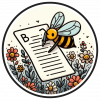Hi,
Is anyone involved in monitoring of wolves with AI object detection in the Netherlands or who would like to?
The other day I went to visit someone in Meersen who was worried about their ponies, their local vet involved me. Just up the road 3x sheep were killed by wolves and a wolf was seen in the street in day time. The area is very quiet, surprisingly, for the Netherlands so I can see how it could be a migration corridor.
I have a monitoring solution that runs on Jetson Orin platform with 16GB of memory and 1024 CUDA cores in a small SBC. I'm currently running with just the pre-trained yolov6 network (Full size) which runs great on this platform, so in this case I would have just detected dogs. However... there appear to be a lot of annotated images of wolves on imagenet that I expect may be able to be converted to a form for addition to the coco dataset for training as an additional object category. I'd like to work with an interested party to make something into a proof of concept for this use. In any area like the North of Meersen there are so few people out at night that knowing about the behavior and level of risk would be very unknown if left to simply people reporting this.
Wtih the person I was talking with we were considering automatically making human talking sounds and possibly lights if a wolf was detected but the cost of such a system was prohibitive for them.
The Netherlands doesn't really want to address any mitigation steps for wolves, such as detecting and then scary them away with sounds from sheep and other live stock. However... it looks like that approach will eventually simply flip 180 degrees like it is doing in Germany and move to just killing them (Political abuse of power here?). Surely, it make's more sense to find a way to mitigate the risk so as to allow the wolves to eat deer and wild boar but protect local people's live stock? I see detection in a proper way fitting the 21st century as a good first step instead of just ignoring the problem.
7 September 2023 1:48pm
Actually, on this subject. In today's news. A farmer was bitten by a wolf in the Netherlands protecting his sheep.
The wolf was shot. So it's already started:

Lars Holst Hansen
Aarhus University
7 September 2023 10:13pm
Hi Kim,
You make some very good points!
Cheers,
Lars
8 September 2023 2:12pm
Hey Kim,
There’s some work being done in Romania that mirrors what you’re talking about:
I’m also working on something similar for North American species (including wolves) but given the difference in landscapes, not sure how well my models would generalize to your area.
Cheers,
Michael

Rob Appleby
Wild Spy
8 September 2023 4:14pm
Hi @kimhendrikse , this is an area I am super interested in, although only starting out (at least on the AI front). I was very interested to read the bear project @xprockox linked to. It's such an elegant and well thought out solution. I think this is essentially what you are after and I am very keen to hear how it goes. I've done a bit with repellents over the years and am looking to do more in the future for dingoes amongst other species. One suggestion I would make is to vary the presentation of sounds to help minimise the chance of habituation. The units in the article @xprockox sent through may already do this, but another option to consider is the Boombox:
from the one and only @Freaklabs and has the ability to randomly or sequentially play mp3 files.
Anyway, massively interested in this area and keen to hear and learn more.
Cheers,
Rob



















Kim Hendrikse